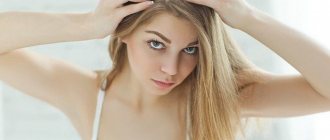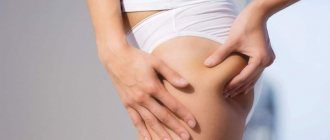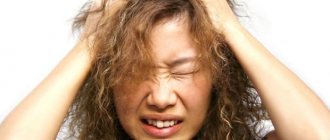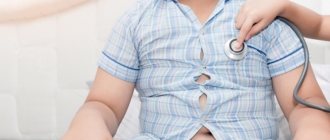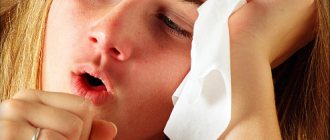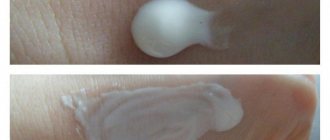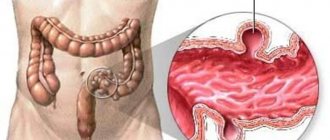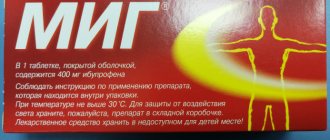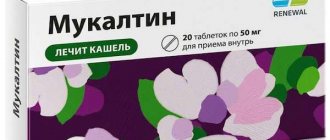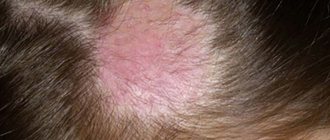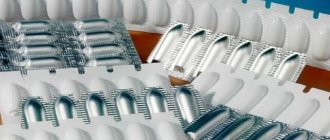How to get rid of lice: reliable remedies and prevention.
Print version
(2323 ratings) Rate this article
Listen to the podcast 04:57 4556 plays (4.53 MB) Read by Marina Daragan Add a comment
Pediculosis is a topic that causes disgust and disgust among many people; it is not customary to talk about it publicly. According to statistics, every second person in the world has encountered this problem at least once in their life. Kindergarten and primary schoolchildren are most at risk of contracting head lice. Therefore, children aged 4 to 12 years should be regularly checked for lice and nits.
Back to contents
Why shouldn't you use kerosene?
Modern mothers and fathers probably remember how, in the era of their childhood, the most common and effective means of combating lice in children was kerosene - entire classes of frightened children were “invited” to special rooms for sanitation, the orderlies smeared the children’s heads with burning kerosene and asked them to be patient for about a quarter hours, wrapped in a scarf...
Indeed, kerosene kills adult lice and their larvae as effectively as the current good-smelling and harmless pharmaceutical shampoos for lice. But there is a significant difference: kerosene is incredibly toxic, it can cause not only severe irritation on the scalp, but also damage to internal organs.
Theoretically, after the first treatment with a special anti-pediculosis shampoo (or in extreme, exceptional cases - kerosene), the child is “free” from lice and is not contagious to the people around him. However, after 7-10 days, if the repeated treatment was ignored, the same baby is able to again “share” his “lousy zoo” with the whole world. Let us repeat once again: both in the interests of the child himself, and for the safety of his relatives and friends, it is extremely important to treat his head not once, but twice - with an interval of 7-10 days.
Lice. Who are we dealing with?
Lice are insects from 0.4 to 4 mm long that live on the scalp of a person and feed on the blood of the “host”. Lice cannot fly or jump, but they quickly cling to hair and are able to crawl “to a new host.” Over the course of 7-10 days, the female lays several hundred nits (eggs), which after a few weeks turn into adults. So it is usually possible to detect lice about a week after infection.
Back to contents
Does my child have lice? Are you kidding! Where?!
Most parents naively believe that lice (like fleas, bedbugs, scabies mites and other ectoparasites) are capable of “attacking” only those people who, for various reasons, neglect hygiene, live, to put it mildly, in extremely cramped conditions, or “get in trouble” ( forgive the pun!) no matter who...
But, alas, no! Lice can happen to absolutely all children and adults indiscriminately; even children from rich and famous families, students of the most elite, privileged boarding schools, etc. are not insured.
It is quite obvious that lice “attack” girls more often than boys (more than 3 times). Accordingly, in girls they are more difficult to remove.
Judge for yourself: the parasite is capable of moving through hair and clothing fabric at a speed of approximately 40 cm per minute. It is also capable of “tightly” attaching itself to fibers or hairs in order to “wait” for its new “owner”. This means that you and your child can become infected with lice at any second - using public transport, donating outerwear to the wardrobe of a cinema or fitness club, washing your things with other people's, not to mention such high-risk options as staying in a hotel or a hostel, a multi-day camping trip in the company of random people (eco-tourism, “wild” tourism, etc.) and other events that involve close communication between people who barely know each other (including children).
Pediculosis in children is perhaps the most common disease that parents try to cope with on their own, within the perimeter of the home bathroom, without unnecessary publicity and without dialogue with the doctor. This often leads to the baby becoming infected with lice again.
The child became infected: the correct explanation
Remember, you shouldn’t scold your child if he gets lice—it’s not his fault. Reassure the child, tell him about lice - that they are not dangerous, they do not cause hair loss and, moreover, no one dies. Distract your baby from his worries and fears, trying not to cause him shame and embarrassment.
It is important to tell your child about preventative measures to avoid getting lice again. Explain to your child that he, like every adult, has things that are intended only for him.
Back to contents
Where and how can a child pick up parasites?
Why do lice appear on children's heads? You can become infected with these parasites only in a group and only from another person. They spread most actively in kindergartens, summer camps and schools. Children in these institutions are in close contact with each other, use common household items, toys, etc. Less often, lice are transmitted in public places - swimming pools, hairdressers, hospitals, hotels. The peak incidence of lice infection occurs at the beginning of autumn, when children infected over the summer begin to go to school and return to kindergartens.
Lice are transmitted even in the absence of characteristic signs. A child with head lice can visit the children's group for weeks and infect others until he is finally diagnosed with a problem. To protect your baby from re-infection, it is necessary to identify and completely eliminate the causes of lice. Otherwise, the fight against these parasites may drag on for many months.
How to get rid of lice in one go
Thanks to the appearance of modern products on the shelves of pharmacies, dubious methods of combating parasites are a thing of the past. Now you can get rid of lice in one go, and the treatment itself does not take much time.
It is better to buy a natural-based product, such as Pediculen Ultra . All Pediculen Ultra are specially developed by the Research Institute of Disinfectology of Rospotrebnadzor to completely destroy lice and nits in just one application , without causing addiction to insects.
The products contain natural anise oil, which has a calming and anti-inflammatory effect - relieves scalp irritation caused by itching, and also reduces children's irritability and tearfulness.
The drug is available in the form of a lotion (50 ml), which is suitable for treating short hair, and a spray (150 ml) for hair below the shoulders.
Back to contents
Medicinal methods of elimination
The range of modern anti-pediculosis agents is very wide, but not all of them can be used for children, so you must carefully read the instructions to see if this product can remove lice from a 1-year-old child or a 2-year-old child. The instructions also indicate how long you need to keep the product on your head.
Permitrin
So, how and with what can you get rid of lice? The safest are products whose active ingredient is permitrin - a synthetic analogue of chamomile extract, less toxic than others, but no less effective.
Silicone-based preparations are considered even safer, since their effect is not chemical, but physical: they form an oxygen-impermeable membrane on lice, as a result of which the parasites die, but do not have any negative effect on the child’s hair and scalp.
The use of sprays and aerosols is preferable, as they are less toxic, but no less effective than shampoos.
Shampoos for head lice
The main active ingredient in almost all such shampoos is permethrin - an effective insecticide that is considered relatively harmless to the human body, but has a nerve-paralytic effect on insects.
- NOC is one of the most popular, although there are restrictions: it cannot be used by children under 2 years of age and pregnant women. It should be applied to the scalp for 30-40 minutes and then rinsed off.
- Veda and Veda-2 are also quite effective products with a similar composition.
- Biosim in an amount of 20 ml is applied to the head, foamed strongly and washed off after a while.
- Pedilin is available in the form of shampoo and emulsion. Penetrates the chitinous membrane and effectively destroys lice.
- Parasidosis is sold together with a special comb for combing out lice and nits; it is fast-acting - it is applied for only 5 minutes.
Lotions, sprays, aerosols for head lice
- Medifox is a permethrin-based lotion-gel that has a paralyzing effect on lice. Suitable for children over 1 year old.
- Para-plus is an aerosol with two active ingredients: malathion and permethrin.
- Nyuda is a silicone-based spray with a milder effect compared to other drugs; recommended for the treatment of head lice in children who have contraindications to the use of chemicals.
- Paranit is a silicone-based spray; destroys lice in 15 minutes, but has no effect on nits. Sold complete with a nit comb.
Lotions, sprays, aerosols for head lice
A few important recommendations:
- Be sure to carefully read the instructions for the drug and its contraindications.
- Some parents use several anti-pediculosis drugs at once - they think that this will be more reliable, but the effect may be the opposite: another drug deactivates the effect of the first.
- All family members must undergo anti-pediculosis treatment at the same time.
- It is not recommended to wash your hair for at least two days after treatment.
- Before treatment, you need to isolate the skin around the scalp by simply tying it with a towel or bandage.
- The child himself needs to be wrapped in a white sheet or any white cloth so that a louse or nit that falls on it is clearly visible and can be immediately destroyed.
- There are special combs for combing, which are often included with the product, but you can also get by with a regular fine-toothed comb, stringing a little cotton wool on it. This way you will see the result of your efforts, and not a single louse or nit will slip past. To make it easier to comb out nits, it is recommended to rinse your hair with a vinegar solution.
Proper treatment for lice and nits
Hair treatment for head lice should be carried out in a ventilated area with good lighting.
Cover your child's shoulders with a white towel to prevent any spillage from getting on their clothes. Starting from the roots, thoroughly moisten your hair with Pediculen Ultra , distributing it over the entire length and lightly massaging the scalp. Don't skimp on the product; your hair should be completely moisturized. Leave the product on for 30 minutes. If your hair is long, gather it in a bun and secure it with a hairpin. Afterwards, rinse your hair thoroughly with warm water and then with shampoo or soap. Dry your hair lightly with a towel.
Using Pediculen Ultra comb, thoroughly comb out dead lice and nits, using a towel to clean the comb each time. Check the result using the Pediculen Ultra magnifying glass .
Rinse your child's things that could become a source of infection with hot water. Wash your child's clothes and bedding. Remember, lice die at temperatures above 40ºC.
Back to contents
Prevention of head lice
Preventing lice in children can be quite challenging. Firstly, you need to talk to your child about maintaining personal hygiene and that he should not share his hat and comb with friends. Also teach your child not to have contact with unscrupulous people, tramp peers and children with obvious signs of lice. Secondly, you will have to tell other parents about your problem so that they can identify the infection in time and prevent the development of an entire epidemic. The following preventive measures may also help you:
- Wash your hair 2 times a week;
- Change linen (bed and underwear) and towels on time;
- Be sure to iron things, paying attention to folds and seams;
- Apply a few drops of lavender or tea tree essential oil to your neck, back of your head, and behind your ears. Parasites do not like strong odors. The same can be done for non-infected family members;
- Every few days, carefully examine the child’s head and comb his hair;
- Avoid places where children with lice may appear;
- What to do if your child has lice? Use the prophylactic product “Paranitis-repellent. Protection against lice." It contains anise oil, which has a negative effect on parasites. The spray has a light aroma and is effective for 24 hours. The cost is about 600 rubles.
See also: Treatment of head lice with folk remedies
More on the topic “How to get rid of lice. Treatment of pediculosis in a child":
Pediculosis…
How to remove lice from a child? How to treat the scalp for pediculosis? Pediatric dermatologist Elvira talks about modern means of preventing and treating head lice... How to get rid of lice? Doctors, clinics, diseases. Child from 7 to 10.
Help!!! How to get rid of lice?
My child has lice! Brought it from school (nowhere else). report anonymously: call the nurse or class. hand and message that they found lice on the child? Treatment of head lice in one go. How to get rid of lice? Treatment of head lice in children is Pediculen Ultra.
relatives do not recognize the fact of head lice in the child
if your children were in close contact for 3 days, slept in the same bed and they have nothing - maybe the girl also has lice? with the volume that you describe, there must clearly be adult individuals. and you can see them. Does the child have lice? Treatment of head lice in one go.
sick of lice at school
sick of lice at school. This is the third time a child has brought lice from school, it’s good that I have a boy, well, yesterday he was cut again. Does the child have lice? Treatment of head lice in one go. Lice. Who are we dealing with? Recognizing lice in time How to get rid of lice in one go.
SOS lice!
SOS lice!. Need some advice. Pediatric medicine. Child health, illnesses and treatment, clinic, hospital, doctor, vaccinations. How to get rid of lice and fleas: parasites will not go away! Treatment of pediculosis, lice remedy Para Plus.
About lice question...
We survived lice in the summer. There were 3 children in the village - my daughter, niece and another girl, who came from the camp, parents. Does the child have lice? Treatment of head lice in one go. Lice. Who are we dealing with? Recognizing lice in time How to get rid of lice in one go.
pediculosis - prevention and treatment
Again about lice. Nannies, kindergartens. Child from 3 to 7. Education, nutrition, daily routine, visiting kindergarten and relationships with Pediculosis in children: treatment and prevention. How to get rid of lice. Print version. Not only in the camp, but also in gardens and schools.
The child has lice...
Does your child have lice? Treatment of head lice in one go. Recognizing lice in time How to get rid of lice in one go Proper treatment for lice and nits.
about lice
How to get rid of lice? Treatment of head lice in children is Pediculen Ultra. As an adult, you can paint your head with paint. These bastards will die in 20 minutes from the acid. Does your child have lice? Treatment of head lice in one go. Pediculosis in children and adults: signs and treatment.
About lice
This is the third time in a year that my child has had lice. I was stunned to see them out. And this is true in many classes. I even heard that in other schools you can buy Cheremichi water and rinse it every time after washing your hair. Once a week, apply a cotton swab soaked in mild...
Lice at school
Lice. Who are we dealing with? How to get rid of lice in one go Proper treatment for lice and nits. Pediculosis in children and adults: signs Pediculosis in children: treatment and prevention. How to get rid of lice. Print version. Not only in the camp, but also in gardens and schools.
Terrible dandruff after lice removal :((((
Lice. Who are we dealing with? How to get rid of lice in one go Proper treatment for lice and nits. How to remove lice from a child? How to treat the scalp for pediculosis? Talks about modern means of preventing and treating head lice...
About lice again: don't go to school?
One child has lice, the other is clean. Well, now, in fact, I’ve cleaned the first one. Should I not let him go to school tomorrow? call the teacher, report lice, undergo an official examination, procedure Does your child have lice? Treatment of head lice in one go.
Lice:( How to get them out?
Here's mine, for the first time in my life:( How to remove them, I looked here, thanks to my friends in misfortune. A child has lice? Treatment of lice in one go. Head lice is caused by small blood-sucking insects - lice, parasitic...
Tell me: My child has lice, what to do?
Does your child have lice? Treatment of head lice in one go. How to get rid of lice? Treatment of head lice in children is Pediculen Ultra. Using a fine-toothed Pediculen Ultra comb, thoroughly comb out dead lice and nits, cleaning the comb each time...
Lice, we can't cope!
Lice seem to be a trifle, and do not pose anything truly dangerous to humans, but what an unpleasant disease they are! Does your child have lice? Treatment of head lice in one go. Recognizing lice in time How to get rid of lice in one go Proper treatment...
Lice:(
Does your child have lice? Treatment of head lice in one go. Recognizing lice in time How to get rid of lice in one go Proper treatment for lice and nits.
Signs of lice
If you suspect that your child has lice, it is recommended to immediately take him to a dermatologist. Many people try to detect signs of insects on their own, but this is not always so easy. Doctors have special lamps with fluorescent light installed in their offices, thanks to which they quickly identify lice.
If you still want to identify them yourself, you can spot insects by the following signs:
- severe itching. When the louse pierces the skin with its proboscis, it injects a special toxic saliva that prevents blood clotting, which is what causes itching;
- the presence of papules, erythema, vesicles. Similar small red swellings appear after lice waste products get on the skin;
- presence of nits. Lice eggs are white in color and can be confused with dandruff. But distinguishing one from the other is quite simple: if the white scale does not come off the hair, it means it is a nit, since the female reliably attaches the eggs to the hair with a special substance;
- movement of lice. If you look closely at your hair for a long time, you will notice how lice run across the scalp in search of a place to bite.
By the way, you can also find out at what stage the pediculosis is. If you remove an egg from your hair and squeeze it with your finger, a sharp, characteristic cracking sound should appear; if there is none, it means that these are already dead eggs, and lice are already in an advanced stage.
The danger of lice infection lies in the fact that wounds on the scalp can easily get infected, and this can lead to staphylococcus, streptococcus, etc. If treatment of the disease does not bring results, then there is a danger that erythema and papules will take the form chronic dermatitis.
The difficulty of treatment lies in the fact that parents often begin to fight lice in their child at an untimely time, again due to an erroneous opinion. In particular, parents in wealthy families often believe that their baby cannot become infected with lice and, if the itching is severe, they only wash their hair one more time rather than take the child to the doctor.
Lice on a child’s head, signs, photo
Lice in children's hair, photo
Signs of lice in hair, photo
Pubic louse
Infection with pubic lice (pubic lice) – phthiriasis. The reasons for its appearance are sexual contact with an infected person. May be observed in the presence of other sexually transmitted diseases.
It is also possible to become infected through linen and bedding while sleeping in the same bed. Cases of infection have been observed in public places: baths, saunas, swimming pools.
Pubic lice are the smallest size of any human parasite species, reaching 1–5 mm. They affect the pubic area, anus, and armpits. When there is large hair growth on the body, it spreads throughout the body, including eyebrows and eyelashes.
Under the influence of substances contained in the saliva of parasites, hemoglobin breaks down. This results in blue spots appearing at the bite sites. Foci of rashes are observed in the groin and axillary areas.
Preventive actions
It is easier to prevent any disease than to treat it later. This also applies to pediculosis. Any suspicious situation fraught with lice infestation requires preventive measures. When it comes to children, this is doubly necessary.
We recommend reading: why lice are dangerous to humans.
Compliance with rules of conduct and hygiene
The main place in the prevention of head lice is occupied by strict adherence to the basics of safety. It is important to teach your offspring the rules of behavior and hygiene. Keeping your distance from strangers will help limit the spread of lice.
The younger generation must understand why there is a danger in using other people's things. It is better to give up a beautiful hairpin or hat than to have to deal with the treatment of lice later.
An encounter with parasites will definitely be memorable. It is necessary to show the insects to the baby and clearly explain that it was the insects that caused him significant inconvenience. You should not scare your offspring by telling signs and legends about lice.
Properly presented information is easy to understand. Warnings will help you be more attentive to behavior and hygiene. The baby will not want to allow lice to become infected again.
It is necessary to pay closer attention to children's hair. It is advisable for boys to have short haircuts. Girls should tidy their hair carefully. Mandatory combing and keeping hygiene instruments clean will help you learn basic lessons about neatness.
Children are washed regularly, underwear and bedding are changed. Keep the house clean. Particular attention is paid to carpets, curtains, sofas, and soft toys.
Important! Children need to be explained that attention to various symptoms and the environment is necessary. If your head is constantly itching, a pimple or blister has appeared, your desk neighbor is complaining about such manifestations - be sure to share it with adults. False alarm, real danger: together the problem will be solved faster.
Visual inspection
The main preventative measure against lice is regular visual inspection. For this, the small subject is seated under good lighting. For better control of the situation, it is advisable that the person being examined does not move. Use a comb to take a thin strand of hair. Carry out a careful inspection for the presence of lice.
The presence of insects and movements inside the hair should alert you. Lice are endowed with discreet colors. Often insects blend in with the natural hair color. A newly engorged parasite has a more pronounced brown color. It is easier to notice such a louse.
Insect nits should not be left unattended. These are small, round, whitish formations located near the roots of the hair. Nits are often called dandruff. Unlike the latter, lice eggs are difficult to separate from hair. When pressed with your nails, the nit makes a noticeable click. How to distinguish nits from dandruff, read on our website.
Visual inspection of offspring should be carried out regularly. A problem detected in a timely manner is easier to fix. Close attention should be paid to the child from spring to autumn, when the spread of lice is more common.
After attending public events, playing together with other children, staying in sanatoriums, camps, and other groups, it is necessary to increase vigilance. The check is performed not only upon the child’s return home, but also for 1–2 weeks after that. The incubation period of the disease is long, the symptoms of head lice appear after some time.
In addition to examining for the presence of lice and nits, the condition of the skin is assessed. The sudden appearance of redness, foci of inflammation, pustules, and scratching indirectly indicates the presence of lice.
If in doubt, a home examination can confirm suspicions in the doctor's office. A specialist will conduct a professional assessment of the condition. Examination with a magnifying glass or Wood's lamp will help make a diagnosis or refute suspicions.
Preventive agents
Lavender and tea tree oils will be an excellent preventative. Lice respond well to odors. Such aromas are unpleasant to them. A drop of oil is rubbed between your fingers, applied to the skin behind the ears, and over the hair at the back of the head. Such a measure will be a salvation from lice before attending public events.
Esters of rosemary, mint, eucalyptus, and lemon are also suitable. The pleasant aroma will additionally prevent colds.
Attention! When using essential oils, you should be careful with their dosage. A large amount of the product can cause irritation and burns. Especially on the baby's delicate skin.
An insecticide spray is considered a good preventative against lice. Spraying the substance over the head is useful before attending events that are dangerous in terms of infection. The use of lice preparations can be carried out if the presence of insects in the hair is suspected. The main thing is to choose the right product. Many lice medications are contraindicated for children. The right solution would be: Paranit, Lavinal, Nit Free.
Avoid using sprays to prevent lice infestation too often. Chemicals can negatively affect the health of a fragile body.
Shampoos are used for prevention. It is acceptable to add a couple of drops of a suitable essential oil to your regular detergent. It is easier to purchase a specialized drug. For prevention and treatment of children choose: Pedilin, Medifox, Nyx. The release form is suitable as a preventative. To prevent lice infestation, simply wash your hair with shampoo as you normally would. It is advisable to simultaneously carry out prophylaxis for all family members.
Lice infestation is perceived as an unpleasant occurrence. Such a misunderstanding can happen to anyone. Especially when it comes to children. Infection can be prevented through properly planned prevention.
Effective folk remedies for lice and nits:
- laundry soap;
- natural oils;
- table vinegar;
- tar soap;
- cranberry;
- hellebore water;
- dust soap.
Why do lice attack again and again?
Nowadays, it’s a rare person who, when faced with this problem, will immediately get a “zero” haircut in order to get rid of parasites. It is much easier to go to the pharmacy and buy a drug that will help fight lice at home, without resorting to radical measures.
To be specific, there are not many ways to fight parasites:
- Medicines that are taken orally. They affect the change in the child’s blood composition, which affects the lice that feed on her.
- Preparations used for external treatment, such as shampoos, sprays or gels. This method is more popular due to its safety and ease of use.
But it often happens that after the parasites are destroyed, lice appear again. So what could be the reason for the constant appearance of lice? In fact, anti-lice shampoos that are sold on store shelves may have a significant disadvantage.
Despite manufacturers' assurances that lice in any form will be completely eradicated, their eggs may not be affected by the toxic substance. Thus, after a certain period of time, new individuals will be born, which will soon be ready to reproduce.
It is for this reason that strict adherence to the rules prescribed on the packaging of the products is necessary, where, as a recommendation, it should be indicated when the procedure should be repeated.
It is important to remember that it is thanks to two treatments that you can get rid of the problem. Otherwise, the reappearance of lice will not be long in coming, and within a week the child will again suffer from constant itching as soon as the lice hatch from the eggs.
Myths about lice
Largely due to sensational myths that pass from mouth to mouth, the problem takes on such a serious character in the eyes of many people.
Let's pay attention to some of them that need to be dispelled so as not to panic at the mere mention of lice:
- “Animals are the main carriers of parasites.” In fact, only a flea can live on an animal, and this insect does not pose a danger to people. To the question of where lice come from, the answer is very simple: the main reason for the appearance of insects in the hair is contact with an infected person.
- “You can get lice from clothing from stores like second-hand stores.”
- Each arrival of any worn item to the store is necessarily accompanied by chamber processing. In any case, when purchasing items, you need to wash them before wearing them. This way you will be sure that there is no infection left on it.
- “People with long hair are more susceptible to lice.” Parasites don't care how long a person's hair is. But yes, if you don’t pin up your long hair in any way, it will be much easier for lice to get through, so if you are in crowded places, it is better to hide them.
- “Parasites live only on the host.” Lice can live for about a day without food, nits - up to two weeks.
- “Lice feed on the keratinized scales of the skin layer.” All parasites feed on blood.
- "All people are susceptible to head lice." No specialist will undertake a categorical statement of this fact, because there is a group of people who are immune to parasites even in the appropriate environment. Perhaps this is due to some individual characteristics of the body.
- “The itching is caused by lice moving around the head.” The cause of itching is salivary discharge after bites. When scratching occurs, a bloody crust forms on the skin.
- “It is impossible to recognize head lice right away.” Diagnosing the appearance of lice even at the very beginning is not difficult. Severe itching is the first symptom of a possible problem. It may itch in the area of the back of the head and ears; when examining, it is better to pay attention to nits - they are much easier to find in adults.
- “Only homeless people are susceptible to lice.” Practice shows that lice are much more willing to crawl into favorable environments: they can be attracted by a good smell and the absence of large amounts of substances secreted by the sebaceous glands.
- “Lice can be confused with dandruff.” Removing dandruff from hair is much easier than removing nits. You can get rid of lice larvae by using only a special fine-toothed comb. And it’s difficult to confuse them externally.
Clinical manifestations of pediculosis and principles of treatment
The first symptoms of head lice appear a few weeks after infection. The incubation period is from 30 days. Pediculosis occurs in different parts of the body, and in this regard, there are 3 types: head, pubic and body. Typically, those infected may notice the following symptoms:
- Skin itching. It appears with head, pubic, and clothing (i.e., on clothes) lice. In the first case, the patient feels an unpleasant itching behind the ears, as well as in the occipital and temporal parts of the head. Pediculosis pubis makes itself felt by itching and burning in the anus and genital area, as well as in the eyelid area. Clothes lice is accompanied by unbearable itching all over the body.
- Rash. This symptom appears a few days after insect bites. In accordance with the location of nits and parasites, the rash can appear on different parts of the body: along the periphery of the scalp in the form of redness, on the thighs and abdomen (blue bites up to 1 centimeter), and also throughout the body in the form of bluish pigmentation.
- Scratching. The symptom affects all areas that have been in contact with lice. Often scratches become covered with purulent crusts.
- Presence of nits. They appear only with head and body lice. Outwardly they look like small silvery bubbles (2-3 mm). They can be both alive and dead - the latter have a duller color.
Treatment principles:
- complete destruction of nits and lice;
- the use of special preparations in the form of aerosols, ointments, shampoos;
- combing out nits and lice after treatment with metal combs with sparse teeth;
- in synthesis with therapeutic treatment, the use of folk remedies;
- processing (washing and boiling) the linen of an infected person: bed sheets, towels, clothes;
- examination of all family members;
- exclusion of visiting public places for a period of 2-3 days;
- disinfection of bite sites with 5% boric acid;
- wearing a hat before treatment.
How to protect your household?
During the period of getting rid of parasites, all family members should follow the following rules:
- avoid close physical contact with an infected person;
- use of personal hats, as well as combs, hairpins, elastic bands, hoops;
- regular changing of underwear followed by washing or boiling;
- treatment with shampoos for prevention (with a very low concentration of the active substance).
If you find lice in a child, treatment at home will quickly kill the adult, but besides this, it is recommended to personally inspect your head (the scalp) every evening for the presence of nits. If any are found, immediately begin eliminating the eggs.
Prevention for household members can be supplemented by the use of special repellents. These include tea tree oil, rosemary, and lavender. You can purchase essential oils of these plants at the pharmacy and apply a few drops to the skin of your neck every 4-6 hours.
Lice in children: how to get rid of them at home?
Medications
How to remove lice from a child at home? Doctors advise using specialized medications to combat lice, such as Pediculen, LiceGuard (in the form of a repellent), soap with dust (concentration of no more than 10 percent of the active substance).
IMPORTANT! They contain a fungicide that is poisonous to insects, but not dangerous to humans. Only in rare cases can it cause short-term irritation of the nasal mucosa and eyes.
Soap with dust is one of the oldest such products, but experts recommend avoiding it, as it is a powerful allergen.
Traditional methods
If you find lice in children, treatment at home can be very effective.
It is best to use vinegar - it dissolves the adhesive substance that attaches the eggs to the hair, after which it is easily removed with a comb.
The lice themselves can be removed with lemon juice - apply it for 20-30 minutes (for a regular boy’s hairstyle, 30-50 milliliters will be enough), wrap it in cellophane.
Next, just rinse them with water, dry them a little and immediately apply diluted 9% vinegar (2 parts water, 1 vinegar) for 10-15 minutes.
Now you need to rinse your hair again and you can start combing out the nits. They are most often found in the back of the head, near the ears and temples. Killing eggs is almost impossible. They are covered with a shell that is resistant to acids and alkalis. They are only affected by specialized toxic chemicals. But without contact with hair, they die within 24-48 hours. But the fight against parasites is not over yet.
Doctors recommend boiling or washing all the child’s everyday clothes that he actively wore during the period when lice were detected. This also applies to bed linen. If washing is performed, the water temperature should be above 60 degrees (optimally in the range from 70 to 80).
If certain clothes cannot be washed at this temperature according to the manufacturer’s recommendations, they should be packed for 3-4 days in a sealed bag. Vacuum sealers for food storage are ideal for this purpose.
Without contact with human skin, both lice and nits die in about 72 hours. Next, all that remains is to rinse the fabric in cool water. Insects do not settle in hard fabric (carpets, trim on sofas, armchairs, beds), so their treatment is not necessary. But clothes must be ironed after washing.
IMPORTANT! Even if the child has never had lice, parents should talk to him about it. Explain that such a disease exists, that it is not dangerous, and so on. Otherwise, he may face ridicule from his peers. Unfortunately, doctors do not pay due attention to anonymity in such situations. In difficult situations, this can result in psychological trauma.
Dust soap
Before treating head lice in children at home using dust soap, it is important to be extremely careful and be sure to check for an individual reaction before the procedure. It is enough to lather the skin in the neck area with it and wait 5-10 minutes. If there is no redness or itching, everything is fine.
How to use soap? Just wet your hair, lather and lather. Then put on a rubber cap (you can use a bathhouse), and wrap a towel on top.
After 30-40 minutes, the hair is thoroughly washed with regular shampoo (at least 2-3 times). After this, it is recommended to treat them with a conditioner or at least chicken yolk.
All that remains is to dry the curls and take the comb, combing out the remaining nits. As a rule, manufacturers add special substances to dust soap that help dissolve the adhesive base of cocoons.
Without this, it is extremely difficult to comb them out. Lice completely disappear after a single use of soap, if you fully adhere to the recommended treatment algorithm. If after some time the parasites appear again, the procedure is repeated, but only if at least a week has passed since the previous time.
This is the most complete answer to the question: “how to treat head lice in children at home?”
General information
What is pediculosis? It is a parasitic disease caused by various types of lice. Based on the type of pathogen and its location, body lice, head lice and pubic lice are differentiated. Head lice in a child live on the scalp. The females of these parasites lay 5 eggs per day; the eggs are called nits.
The main method of infection is contact, when children share towels, combs, toys, or simply touch their heads.
Lice feed on blood, they bite through the epidermis, which causes discomfort. Each form of the disease is manifested by severe itching, burning, the baby scratches the itchy area, crusts and peeling appear at the site of the lesion.
What is pediculosis in children?
Pediculosis (in the popular lexicon “lice”) is an infectious disease caused by ectoparasitic blood-sucking insects located in the scalp of the host. The disease is accompanied by painful sensations from lice bites, itching, rash, with the ensuing consequences: scratching and infection of the skin.
A pediatric dermatologist or pediatrician can easily diagnose head lice in children using a visual examination or a special Wood's lamp.
The place of localization during the initial stages of the occurrence of head lice is considered to be the back of the head and temples . With advanced pediculosis, insects parasitize the entire body.
To treat childhood lice, special insecticidal shampoos and preparations are used, for example: Nyuda, Pediculen Ultra, Paranit, Para Plus. Failure to comply with personal hygiene rules and inaction in the event of lice detection can lead to tangled hair caused by insect secretions, the appearance of ulcers and damage to the hair follicles . Nits, empty eggs, lice and their feces appear on the child’s head.
Symptoms of lice
Pediculosis does not have an incubation period, so when lice get to a new host, they simply continue to live as before, biting through the skin and sucking blood.
The first symptom of infection is itching in the temples, behind the ears and on the back of the head.
Further, if proper treatment is not carried out for a long time, the lice multiply and the symptoms intensify. The following symptoms appear:
- excessive scratching of the head, neck and face;
- excessive moodiness;
- restless sleep, restlessness.
During a routine hair examination, the following symptoms should alert you:
- rash with a bluish tint;
- movement in the hair;
- the presence of “sticky” dandruff that cannot be brushed off;
- dead or living small insects near the roots.
ATTENTION! If lice are not detected in a timely manner and there is no treatment, the child will develop numerous scratches, which will lead to infection and the occurrence of inflammatory processes.
